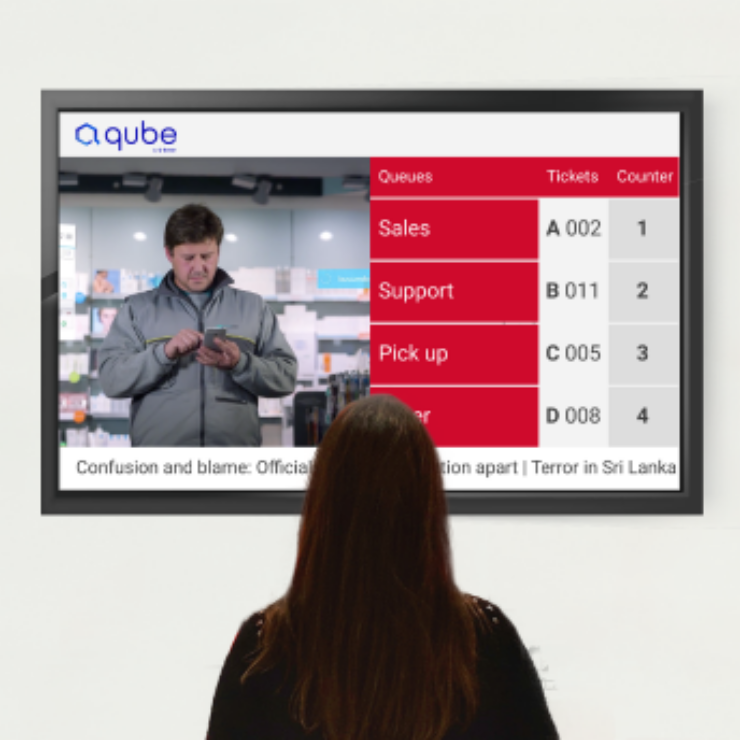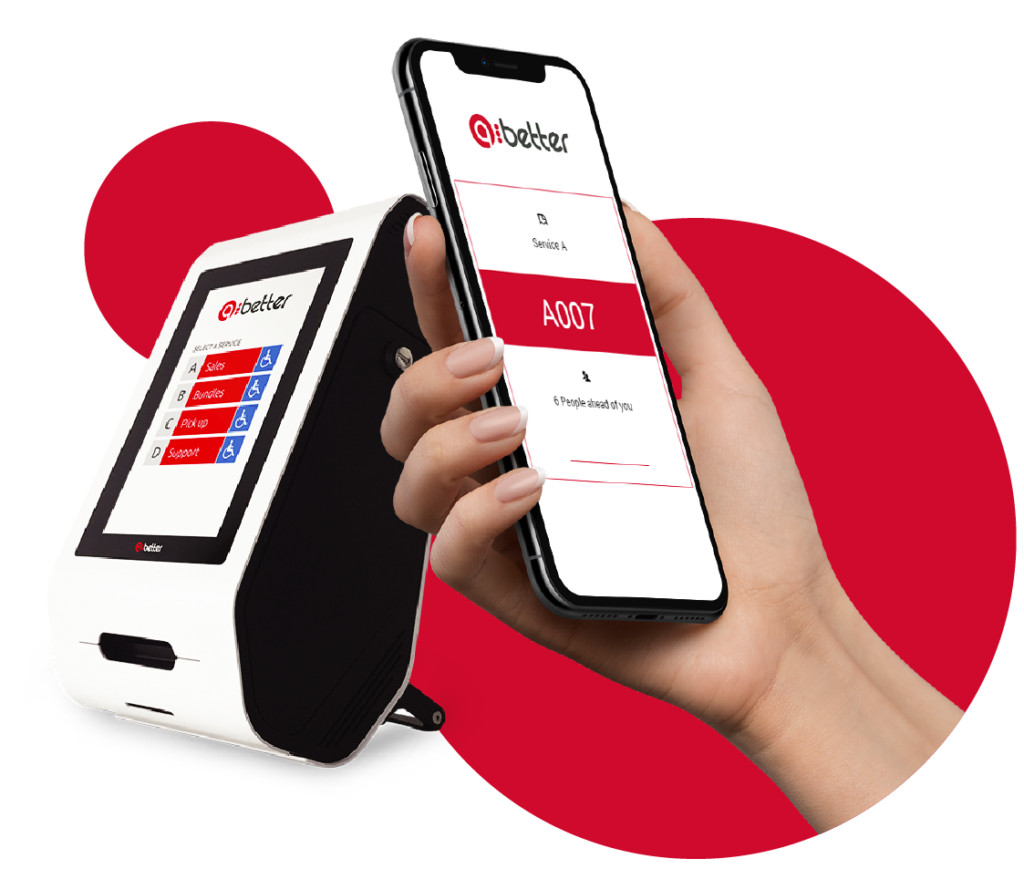- Home
- About Us
- Products
- Electronic Article Surveillance System EAS / Retail Anti theft Systems
- Display Stands
- Restaurant Pager
- People Counting Systems
- Queue Management Systems
- Access Control System
- Time Attendance Systems
- Audio & Visual System Solutions
- Display Solutions
- CCTV Cameras in Qatar: Enhancing Security Solutions
- Time Lapse Construction Camera
- Flap Barrier, Speed Gates, Turnstiles Access Control
- Gate Barriers System & Bollards in Qatar
- Parking Management & Gate Automation
- Library Management Systems
- IT & Telecom
- Lockers & Key Management Systems
- Intrusion Alarm System
- Perimeter Security
- Vehicle Tracking
- Time Recorders & Time Stamps
- Emergency Exit Door Alarms
- Clients
- Contact Us
- Support
Contents
Queue Management System in Hospital: What, How and Why?
Hospitals are one of the most essential and critical sectors in any society. They provide health care services to millions of people every day, saving lives and improving well-being. However, hospitals also face many challenges in managing their operations efficiently and effectively. One of the most common and persistent problems is the long waiting time for patients.
Waiting time is the time that a patient spends from the moment they arrive at the hospital until they receive the service they need. It can include the time spent in registration, triage, consultation, diagnosis, treatment, pharmacy, billing, etc. Waiting time can have a significant impact on the patient experience, satisfaction, and loyalty. It can also affect the quality of care, staff productivity, and hospital reputation.
According to a study by Press Ganey Associates, a leading health care consulting firm, the average waiting time for patients in U.S. hospitals is 23 minutes. However, this can vary widely depending on the type, size, location, and specialty of the hospital. Some patients may have to wait for hours or even days before they get the service they need.
This is where a queue management system in Hospital (QMS) can help. A QMS is a set of software and hardware components that enable hospitals to monitor and control patient flow, assigning a unique identifier or ticket to track their position in the queue upon arrival. A queue management system in Hospital can also provide information to patients and staff about the current status of the queue, such as the estimated waiting time, the number of people ahead, and the service area they need to go to.
A QMS can improve the patient journey in every touchpoint across the hospital, from pre-arrival to post-service. It can reduce waiting time, avoid overcrowding, enhance communication, and increase efficiency. Some of the benefits of using a queue management system in Hospital
- Improved patient satisfaction: Patients feel more valued and respected when they are informed about their waiting time and service process. They also appreciate the convenience and comfort of being able to wait anywhere until their turn arrives, even outside the premises with a virtual ticket number. A queue management system in Hospital can also enable patients to give feedback on their experience, which can help hospitals identify and address any issues or complaints.
- Improved staff satisfaction: Staff can work more effectively and productively when they have access to real-time data and analytics about patient flow. They can also communicate better with patients and each other using digital signage, SMS, or mobile app notifications. A queue management system in Hospital can also reduce stress and frustration for staff by eliminating long queues and dissatisfied patients.
- Improved quality of care: A QMS can help hospitals optimize their resources and capacity by allocating staff and equipment according to demand and priority. It can also help prevent errors and delays by ensuring that patients are directed to the right service area at the right time. A QMS can also improve patient safety by minimizing contact and exposure to potential infections.
- Improved hospital reputation: A queue management system in Hospital can enhance the image and brand of a hospital by demonstrating its commitment to providing high-quality care and service to its patients. It can also attract more patients and referrals by increasing word-of-mouth and online reviews.
Different Models of Queue Management System in Hospital
There are different models of queue management system in Hospital can choose from depending on their needs and preferences. Some of the most common ones are:
- Linear queue: This is the simplest and most traditional model of queue management system in Hospital, where patients form a physical line in front of a service counter or desk. They are served on a first-come-first-served basis or according to their priority level. This model is easy to implement but has many drawbacks, such as limited space, lack of privacy, boredom, anxiety, and frustration for patients.
- Multiple queue: This is a variation of the linear queue model, where there are multiple lines for different service areas or categories. For example, there may be separate queues for registration, triage, consultation, etc. This model can reduce waiting time and confusion for patients but may still cause crowding and dissatisfaction if some queues are longer or slower than others.
- Single queue: This is a more advanced model of queue management system in Hospital, where there is only one line for all service areas or categories. Patients are served by the next available staff member or station regardless of their service type or priority level. This model can improve fairness and efficiency for patients but may require more staff coordination and management.
- Virtual queue: This is the most modern and innovative model of queue management system in Hospital, where there is no physical line at all. Patients can join the queue virtually from anywhere using SMS, QR code, smartphone app, or website booking system. They receive a ticket number that indicates their position in the queue and their estimated waiting time. They can then wait comfortably until they are notified that their turn has arrived. This model can eliminate all the drawbacks of the physical queue models and provide the best patient experience and satisfaction.
Contact Axle Systems for Distributor of Queue Management System in Hospital in Qatar
If you are looking for a reliable and professional distributor of queue management system in Hospital in Qatar, you should contact Axle Systems. Axle Systems is a leading provider of queue management system in Hospital solutions for various industries, including healthcare, retail, banking, education, government, etc. They have more than 15 years of experience and expertise in delivering customized and integrated QMS solutions that meet the specific needs and expectations of their clients.
Axle Systems can offer you a range of QMS products and services, such as:
- Qmatic Orchestra: This is a scalable and flexible queue management system in Hospital platform that can manage complex and dynamic patient flows across multiple service areas and locations. It can also provide real-time data and analytics to help you optimize your performance and quality.
- Qmatic Solo: This is a simple and easy-to-use QMS solution that can handle basic and straightforward patient flows for single or multiple service areas. It can also provide essential information and communication to your patients and staff.
- Qmatic Mobile Ticket: This is a mobile app that allows your patients to join the queue virtually from anywhere using their smartphones. They can also check their waiting time, position, and service details on the app.
- Qmatic Kiosks: These are self-service terminals that allow your patients to check-in, register, select their service type, and print their ticket number. They can also provide information and guidance to your patients using touchscreens, keyboards, scanners, etc.
- Qmatic Digital Signage: These are LCD or LED screens that display information and communication to your patients and staff. They can show the current queue status, waiting time, service area, ticket number, etc. They can also show promotional messages, announcements, news, etc.
Axle Systems can help you design, install, configure, maintain, and support your QMS solution according to your requirements and budget. They can also provide training and consultancy to help you maximize the benefits of your QMS solution.
If you are interested in learning more about Axle Systems and their QMS solutions for hospitals, you can visit their website or contact them at:
- Phone: +974 4468 2391
- Email: [email protected]
- Address: 5th floor , Al bandary building, Najma, Doha- Qatar
FAQs
Here are some common questions and answers about QMS in hospital:
Q: What are the benefits of using a QMS in hospital? A: A QMS can improve the patient experience, satisfaction, loyalty, quality of care, staff productivity, efficiency, safety, and reputation of a hospital.
Q: How does a QMS work in hospital? A: A QMS works by assigning a unique identifier or ticket to each patient upon arrival and tracking their position in the queue until they receive the service they need. A QMS also provides information and communication to patients and staff about the current status of the queue.
Q: What are the different models of QMS in hospital? A: There are different models of QMS in hospital, such as linear queue, multiple queue, single queue, and virtual queue. Each model has its own advantages and disadvantages depending on the needs and preferences of the hospital.
Q: How can I choose the best QMS for my hospital? A: You can choose the best QMS for your hospital by considering factors such as your service type, size, location, specialty, capacity, demand, priority level, budget, etc. You can also consult with a professional and experienced distributor of QMS solutions such as Axle Systems.
Q: How can I contact Axle Systems for distributor of QMS in hospital in Qatar? A: You can contact Axle Systems for distributor of QMS in hospital in Qatar by visiting their website or calling them at +974 4468 2391 or emailing them at [email protected].





